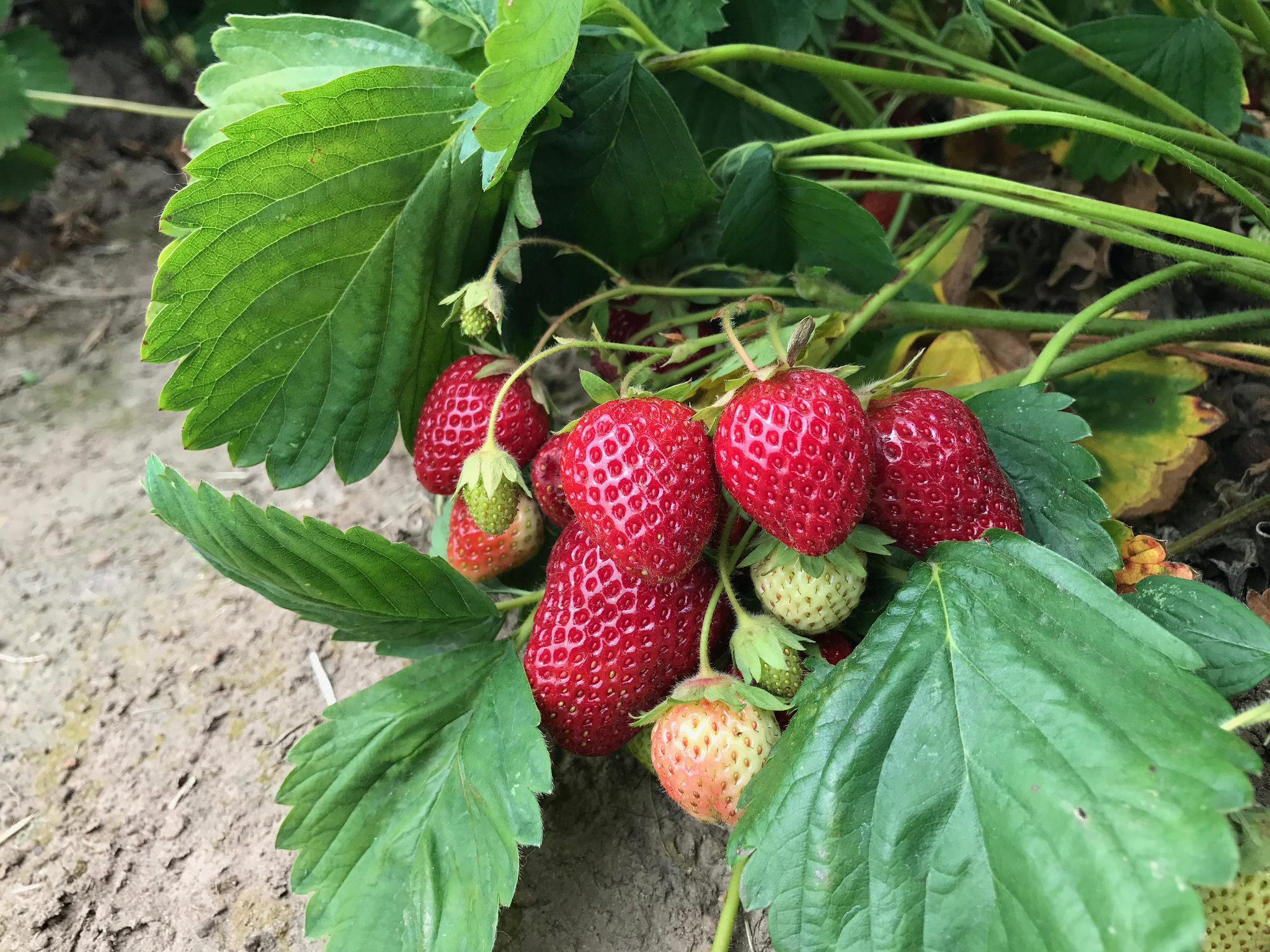Whether dipped in chocolate, tossed in a fruit salad or eaten naked, strawberries say summer in a big way. But they aren’t always cheap or sweet when bought at the store, so save money and get the freshest by growing your own.
The first thing you need to know is what type of strawberry you want: June bearing, everbearing or day neutral. As the name implies June bearing plants produce berries primarily in June; everbearing in early summer and fall with not much in between; and day neutral yield all summer except during very hot periods when temperatures get above 90.
“Day neutral are what most home gardeners will want unless they need a large batch of berries all at once to make jam,” said Jeff Choate, a horticulturist with Oregon State University Extension Service.
Once you’ve decided on the type of strawberry to grow, you’ll want to choose a variety. For June bearing, Choate likes ‘Hood,’ which gives one good flush of berries in June and July and is the standard bearer for flavor. But most people will lean toward the day neutral varieties. He recommends ‘Albion’ and ‘Seascape.’ Readily available in the ever-bearing category is ‘Quinault,’ though it’s not as sweet as others.
More varieties are recommended in Extension’s Strawberry Cultivars for Western Oregon and Washington. There are a few suggested for colder areas, as well. Charts in the publication indicate when and how much the plant bears; type of berry and flavor; and susceptible diseases. For general growing information refer to Growing Strawberries in Your Home Garden and, for gardening at the beach check out Growing Berries on the Oregon Coast: Strawberries.
Bareroot strawberry plants (no soil on the roots) are available at nurseries and through mail order in February and March. Plant starts can be found now and should be put in the ground as soon as possible, Choate said. Strawberries are self-pollinating, so you don’t need to pair them with another variety like you do with blueberries.
Plant in full sun for best production. Build a raised bed 12 inches high by tilling in organic material, preferably compost, but anything is better than nothing, Choate said.
There are two ways to plant strawberries – the matted-row and hill systems. Matted-row is preferred for June bearers and hill for day neutral and everbearers. To make a matted-row planting, place berries 15 inches apart in rows 3 to 4 feet apart. The runners, which root and make new plants, will fill in the rest of the space and result in a dense planting. As the runners grow outside of the bed, push them back into the bed where they’ll make new plants.
In the hill system, keep 12 to 15 inches between plants in double- or triple-wide rows. Aisles should be 1 ½ to 2 feet wide. Cut off all runners every two to three weeks. It’s best to wait until runners have formed “daughter” plants but have not rooted.
Use a balanced fertilizer with the three numbers on the front label equal or close to equal – 16-16-16, for example. Check the label and divide the overall amount recommended by the number of applications needed throughout the season. June bearing strawberries get fertilizer following renovation after the fruit is finished. Everbearers and day neutral get several applications throughout the season. Refer to the above publication for more detailed instructions. Use a garden tool or broom to sweep fertilizer off leaves and always water after feeding.
Don’t be dismayed when strawberries don’t bear much the first year. Plants will produce a full crop the next year and two to four seasons after that before production dwindles. At that point, new plants will need to go in. Start a new patch in the year your existing one is in its last season so you don’t skip a year of fruit.
To get maximum yield, never let plants be stressed by lack of water, Choate said. Keep newly set strawberries well irrigated with about 1 to 1½ inches of water a week. Don’t saturate the soil – strawberries dislike wet feet. Let the soil dry out to the touch (up to the first knuckle) before watering and then water down to 6 to 8 inches.
Annual renovation is necessary for June bearers but not day neutral or everbearing. After plants have finished producing berries, use a string trimmer or rotary mower and cut plants to about 2 inches above the crown. Remove the debris, but don’t rake vigorously or you’ll damage the crowns. Renovation isn’t necessary for day neutral and everbearers.
Strawberries are susceptible to verticillium wilt so it’s a good idea to rotate beds periodically. Spotted wing drosophila can be a pest; the best control is good sanitation. Pick berries regularly, try to avoid a wet environment and keep runners pruned. The natural pesticide spinosad, sold under various brands, is one of the best treatments if they do get started on your fruit, Choate said.

